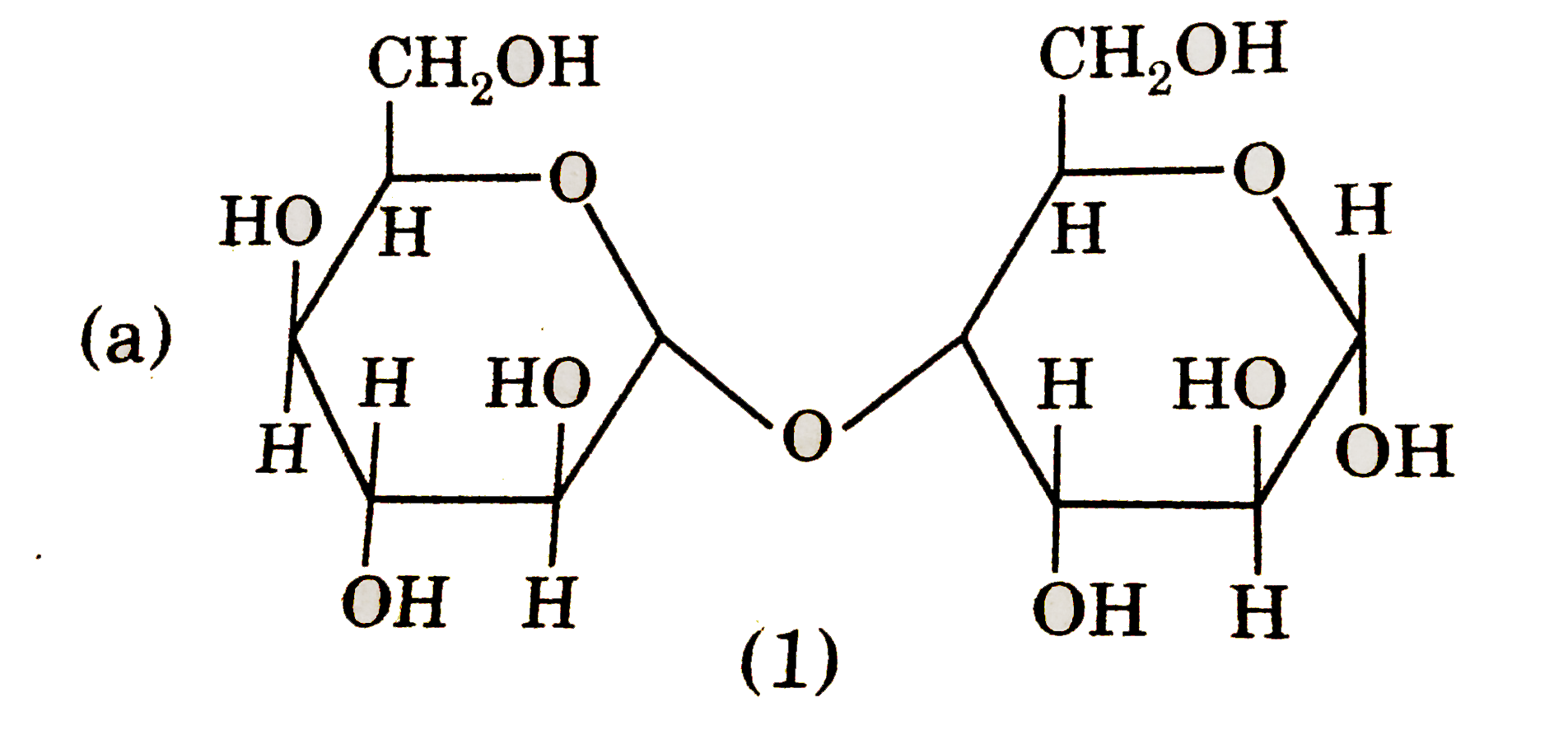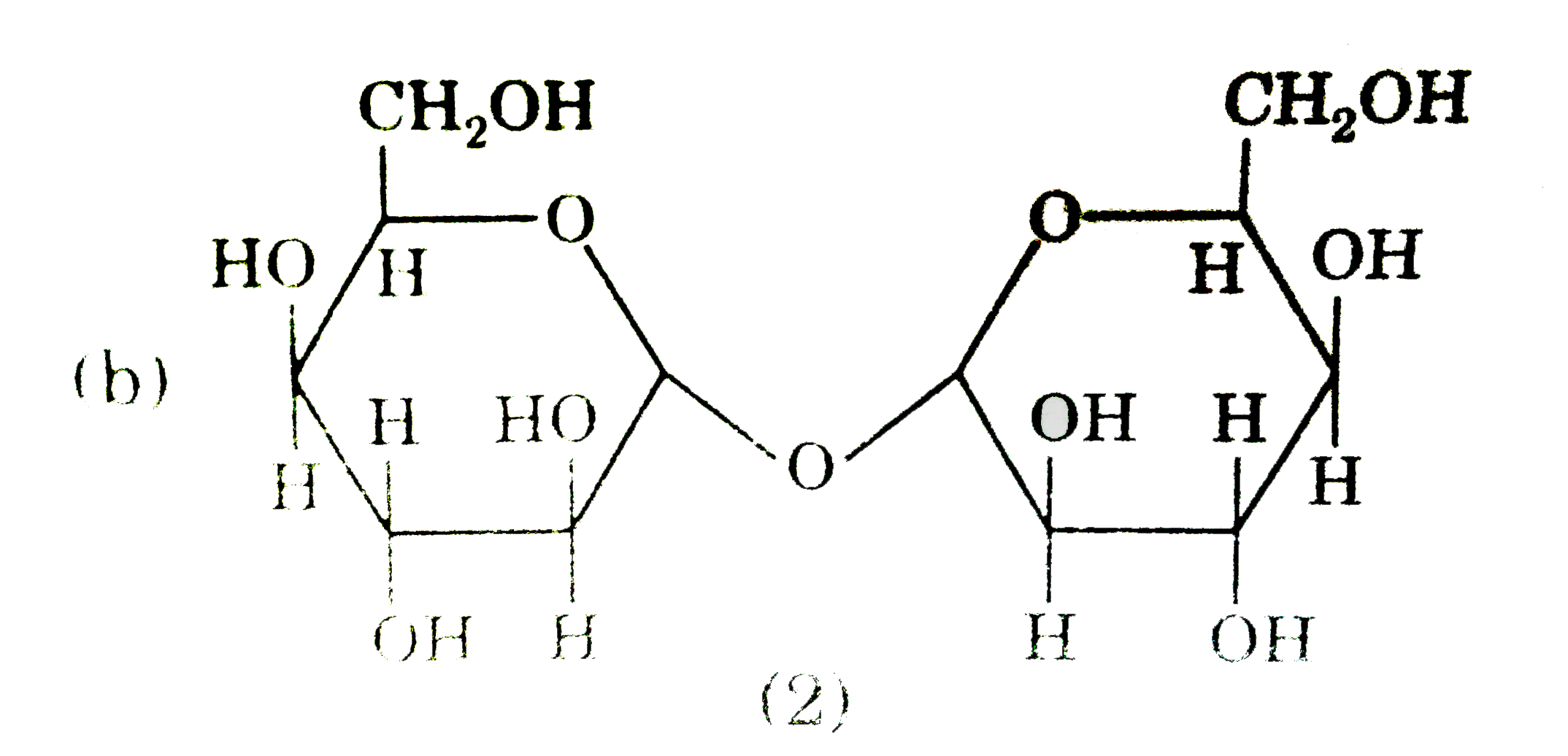Tollen's reagent is
Cu2O
[Cu(OH)4]2−
Ag2O
[Ag(NH3)2]+
The correct Answer is:D
Step-by-Step Solution:
1. Definition of Tollen's Reagent:
Tollen's reagent is a chemical reagent used to test for the presence of aldehydes. It is a solution of silver nitrate (AgNO3) in ammonia (NH3).
2. Chemical Composition:
The chemical formula for Tollen's reagent can be represented as (Ag(NH3)2)+. This indicates that the silver ion (Ag+) is complexed with two ammonia molecules, forming a complex ion.
3. Preparation:
To prepare Tollen's reagent, silver nitrate is dissolved in water, and then ammonia is added until the solution becomes clear. It is important to add ammonia slowly to avoid the formation of precipitates.
4. Functionality:
Tollen's reagent is primarily used to distinguish between aldehydes and ketones. Aldehydes can reduce Tollen's reagent, resulting in the deposition of metallic silver, which appears as a silver mirror on the inner surface of the test tube.
5. Reaction with Aldehydes:
When an aldehyde is present, it reacts with Tollen's reagent to form a carboxylic acid. The general reaction can be represented as:
RCHO+2(Ag(NH3)2)++3OH−→RCOO−+2Ag+4NH3+2H2O
Here, RCHO represents the aldehyde, and RCOO^- is the resulting carboxylate ion.
6. Distinction from Ketones:
Ketones do not react with Tollen's reagent under normal conditions, which is why this reagent is useful for distinguishing between these two classes of compounds.
Final Answer: Tollen's reagent is ammoniacal silver nitrate, represented as (Ag(NH3)2)+, and is used to differentiate between aldehydes and ketones.
---
Tollen's reagent is a chemical reagent used to test for the presence of aldehydes. It is a solution of silver nitrate (AgNO3) in ammonia (NH3).
The chemical formula for Tollen's reagent can be represented as (Ag(NH3)2)+. This indicates that the silver ion (Ag+) is complexed with two ammonia molecules, forming a complex ion.
To prepare Tollen's reagent, silver nitrate is dissolved in water, and then ammonia is added until the solution becomes clear. It is important to add ammonia slowly to avoid the formation of precipitates.
Tollen's reagent is primarily used to distinguish between aldehydes and ketones. Aldehydes can reduce Tollen's reagent, resulting in the deposition of metallic silver, which appears as a silver mirror on the inner surface of the test tube.
When an aldehyde is present, it reacts with Tollen's reagent to form a carboxylic acid. The general reaction can be represented as:
RCHO+2(Ag(NH3)2)++3OH−→RCOO−+2Ag+4NH3+2H2O
Here, RCHO represents the aldehyde, and RCOO^- is the resulting carboxylate ion.
Ketones do not react with Tollen's reagent under normal conditions, which is why this reagent is useful for distinguishing between these two classes of compounds.
Topper's Solved these Questions
- STRUCTURAL IDENTIFICATION & PRACTICAL ORGANIC CHEMISTRYBOOK - RESONANCE ENGLISHCHAPTER - STRUCTURAL IDENTIFICATION & PRACTICAL ORGANIC CHEMISTRYEXERCISE - Jee main
6 Videos
- STRUCTURAL IDENTIFICATION & PRACTICAL ORGANIC CHEMISTRYBOOK - RESONANCE ENGLISHCHAPTER - STRUCTURAL IDENTIFICATION & PRACTICAL ORGANIC CHEMISTRYEXERCISE - APSP
30 Videos
- STRUCTURAL IDENTIFICATION & PRACTICAL ORGANIC CHEMISTRYBOOK - RESONANCE ENGLISHCHAPTER - STRUCTURAL IDENTIFICATION & PRACTICAL ORGANIC CHEMISTRYEXERCISE - Exercise-3
3 Videos
- SOLID STATEBOOK - RESONANCE ENGLISHCHAPTER - SOLID STATEEXERCISE - Part- IV
21 Videos
- THERMODYNAMIC & THERMOCHEMISTRYBOOK - RESONANCE ENGLISHCHAPTER - THERMODYNAMIC & THERMOCHEMISTRYEXERCISE - INORGANIC CHEMISTRY(P-Block Elements)
26 Videos
Similar Questions
Knowledge Check
Tollen's reagent is
AAlkaline mercuric chloride solutionBAmmoniacal silver nitrate solutionCAmmonium citrate solutionDAlkaline potassium permanganate solution.Tollen's reagent is
AAlkaline mercuric chloride solutionBAmmoniacal silver nitrate solutionCAmmonium citrate solutionDAlkaline potassium permanganate solution.Tollen's reagent is
AAlkaline mercuric chloride solutionBAmmoniacal silver nitrate solutionCAmmonium citrate solutionDAlkaline potassium permanganate solution.
Acetaldehyde and Propyne can be distinguish by :
(i) Tollen's reagent " " (ii) l2/NaOH " " (iii) Lucas reagent " " (iv) neutral FeCl3
View SolutionAssertion (A) Aldehydes and ketones, both react with Tollen's reagent to form silver mirror.
Reason (R) Both, aldehydes and ketones contain a carbonyl group.
View SolutionAn organic compound "A" of molecular weight 120, gives Tollen's reagent test and 2,4-DNP test but no Iodoform with I2OHΘ . The compound "A" may be
View SolutionWhich of the following acid give positive Tollen's reagent test.
View SolutionWhen fructose treated with Tollen's reagent, silver mirror is formed due to reduction of Ag⊕ by:
View Solution


